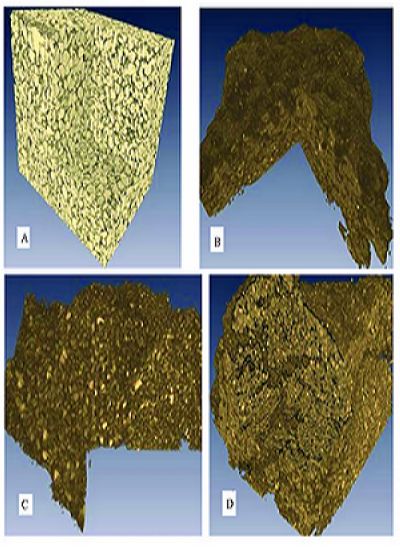Pore Structure of Lichen Crusts in the Tengger Desert, China
Updatetime:2011-03-01From:
【Enlarge】【Reduce】
X-ray micro-CT imaging coupled with 3D image analysis based on specific procedures for porous media have been applied to the analysis of the porosity structure of the lichen crusts at the Shapotou Desert Research and Experiment Station in the Tengger Desert, northern China. The results indicated that it will provide a very accurate quantification of the internal structure of lichen crusts due to stabilization of sand dune of different age. The general trend with the age of the lichen crusts is a reduction in volume of connected pores but an increase of the size of the remaining connected ones. The lichen crusts aggregates show a general increase of average pore network tortuosity reaching the maximum value with the age, and also exhibit a significant anisotropy of the tortuosity. In such cases the pore network has resulted more tortuous in vertical direction. Measurements on the pore space architecture have allowed to following from a new point of view the long term evolution of the surface stabilization process in the Tengger Desert region.
|
Internal structure of dune sand (A),natural lichen crust(B),lichen crust of 1989(C) and lichen crust of 1964(D) (Picture/Journal of Desert Research) |
Appendix





